Imre Székely and His Daughters
European idea and Hungarian soul: the role of an aristocratic family in the Hungarian musical life in Pest.
Hungarian Fantasies and Chamber Music
Imre Székely (1823–1887) was one of the remarkable, but almost completely forgotten figures of 19th-century Hungarian music. In the 1830s, his aristocratic parents took the talented child to Pest, where he was taught by József Merkl, Ferenc Erkel, and Ferenc Doppler. Then came the obligatory European concert tour.
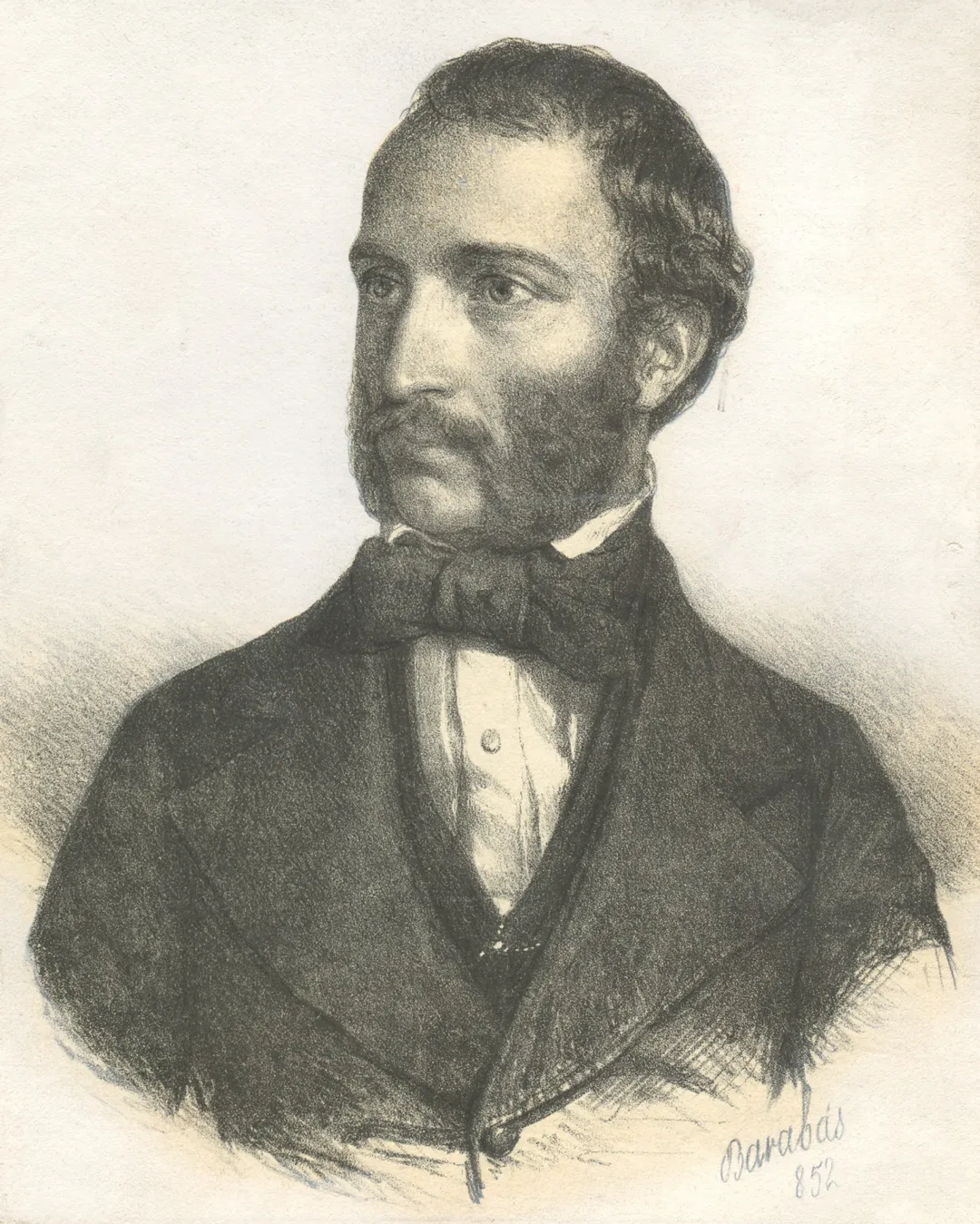
Research Library of the Liszt Ferenc Academy of Music, Gr 073
Székely spent a longer period with Ede Reményi in Paris and in London, where his Romantic salon pieces and refined piano playing attracted great deal of attention. In a letter, addressed from in London to his former master Ferenc Erkel, he writes that the British capital is well informed of Hunyadi László in spite of the fact that unfortunately no performance took place there. Székely also enclosed his new works published in London – signed, of course, to his dear teacher and friend. It is probable that Székely played his piano piece on Hunyadi’s melodies abroad. He published his work in Pest under the title 5. Magyar ábránd [5th Hungarian Fantasy]. This was followed a decade later by the 13. Magyar ábránd [13th Hungarian Fantasy], based on the themes of Bánk bán.
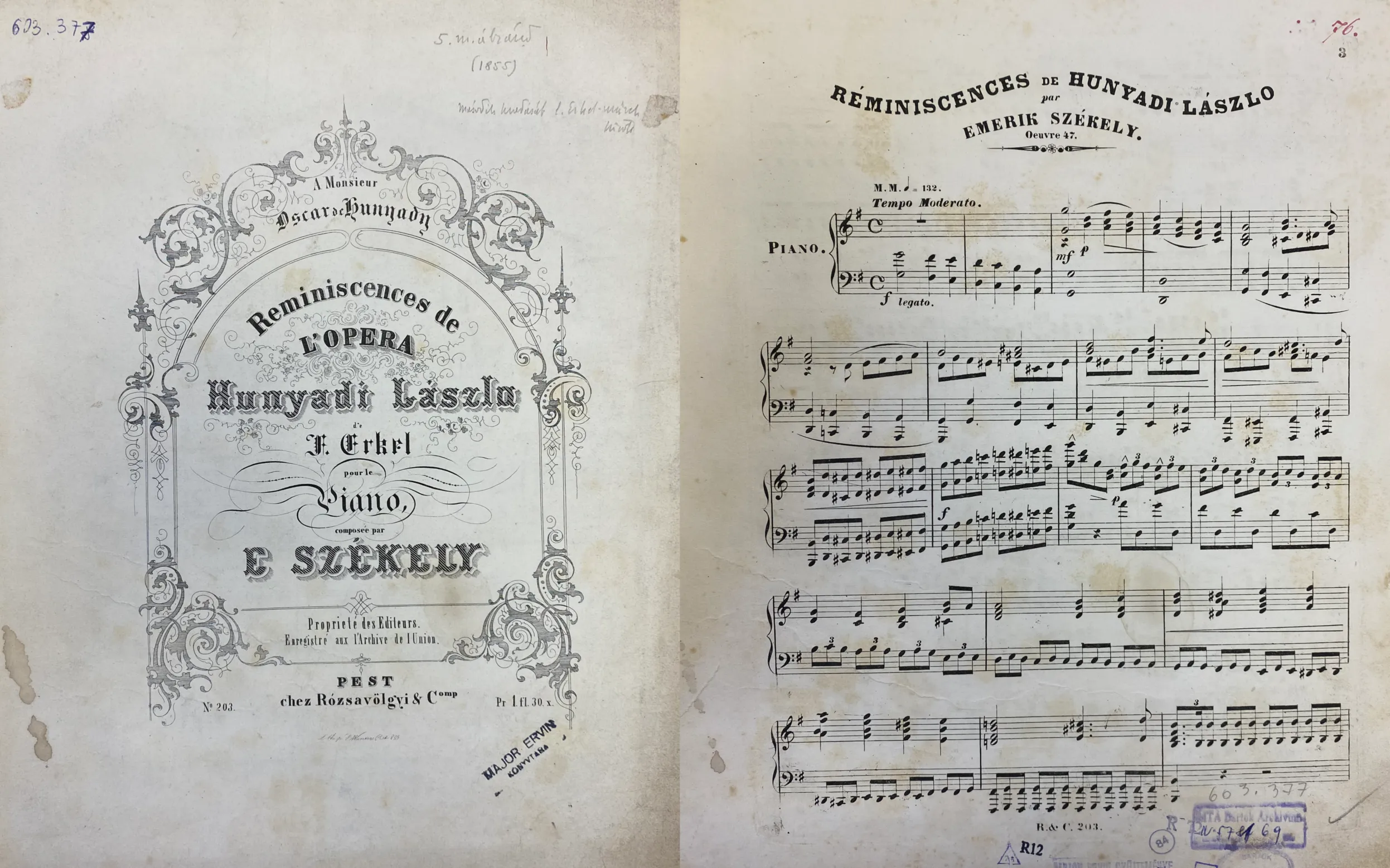
Library of Musicology of the Institute for Musicology, RCH HUN-REN
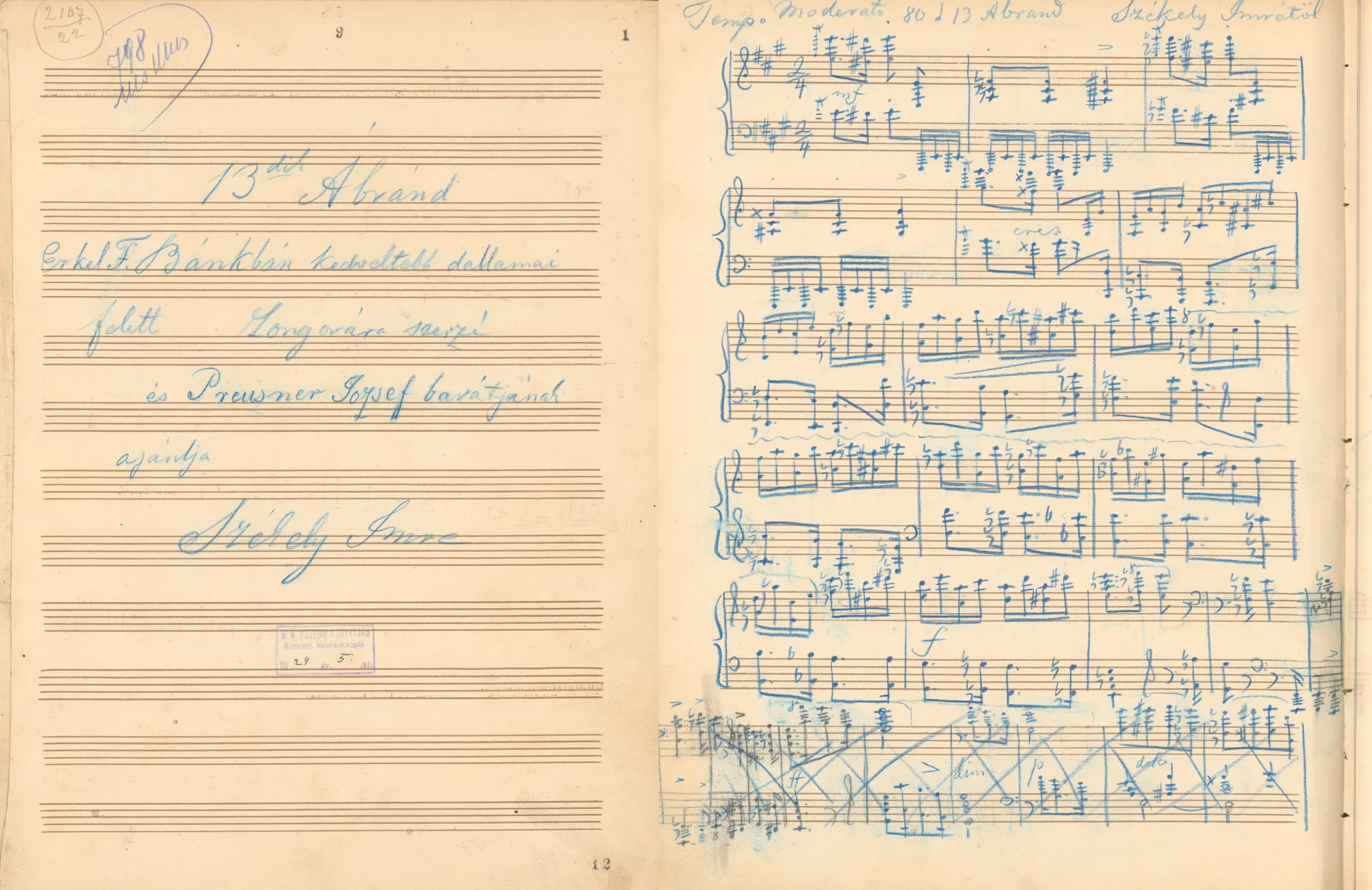
National Széchényi Library Theatre and Music Department, Ms. Mus. 798
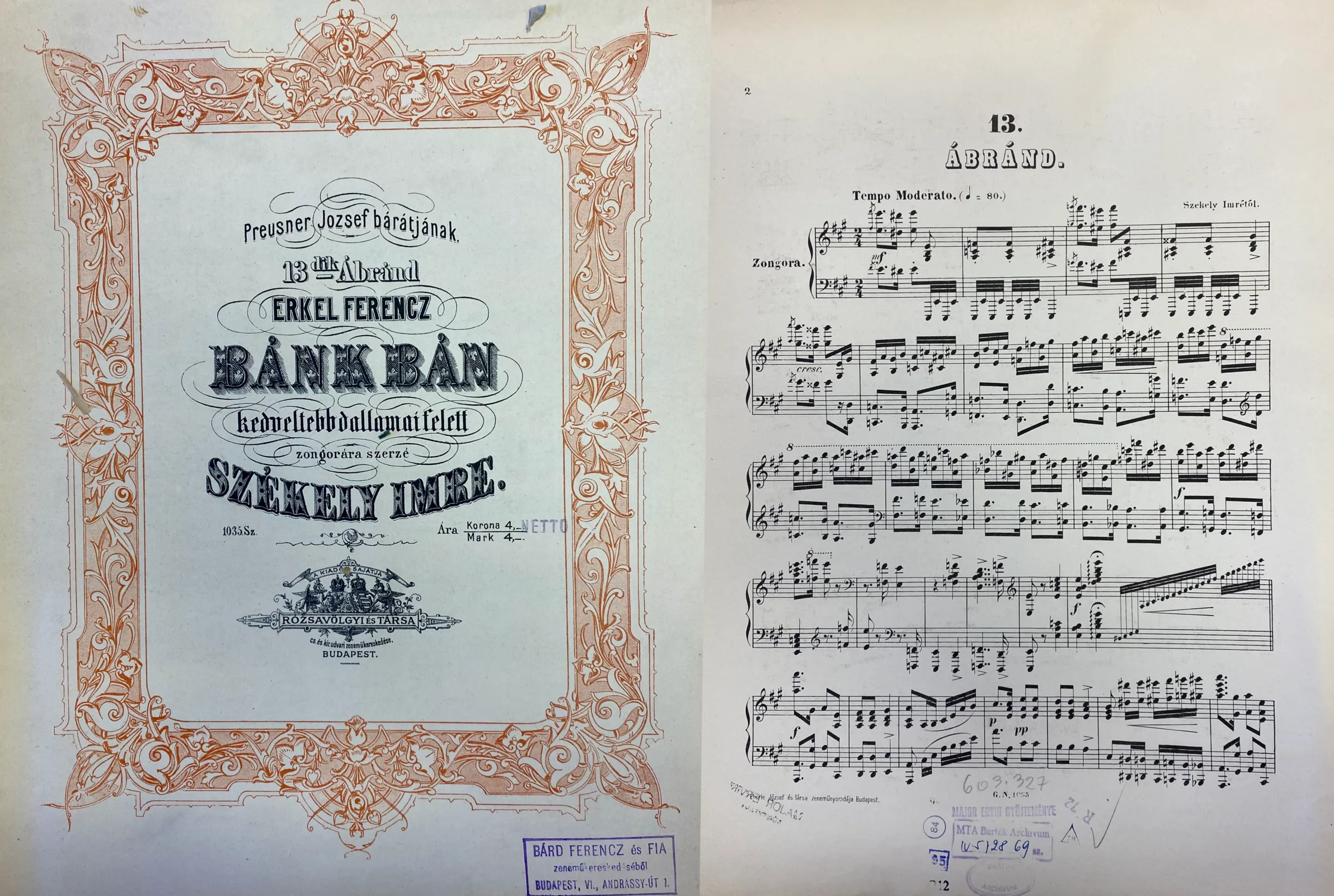
Their friendship grew out of a student-master relationship, with Erkel teaching Székely at first piano, then composition. Székely gave his first major concert, conducted by Ferenc Erkel, at the National Theatre in 1845. This was not his last at the same institution.

National Széchényi Library Theatre and Music Department
On his return to Pest, Székely became famous with his piano pieces Magyar ábrándok [Hungarian Fantasies], which combined cosmopolitan Romantic style and Hungarian melodies. Székely’s musical output reflects the spirit of European Romanticism, while looking for answers, in a unique way, to the question “What is Hungarian?” in music. His work as a chamber music composer remains completely obscured, in spite of his string quartets and quintets occupying a special place in 19th-century Hungarian music history. These works were performed in Székely’s salon, mainly for his family and circle of friends, but the Pest audience could also hear them several times in concert venues.
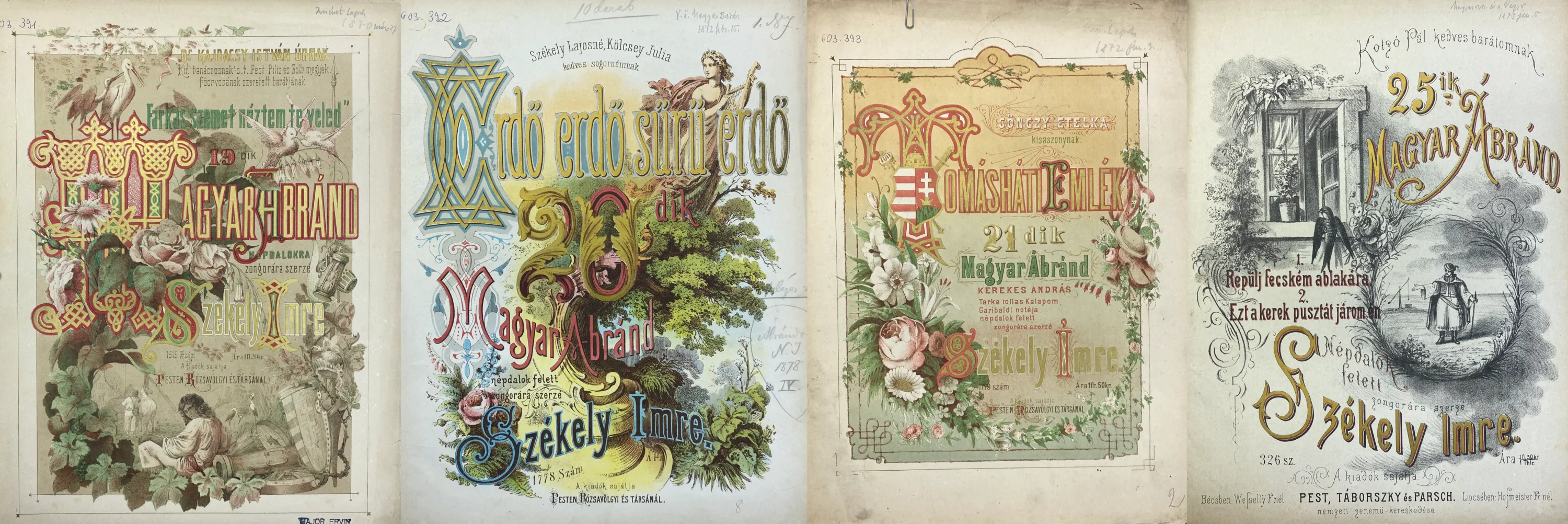
Library of Musicology of the Institute for Musicology, RCH HUN-REN
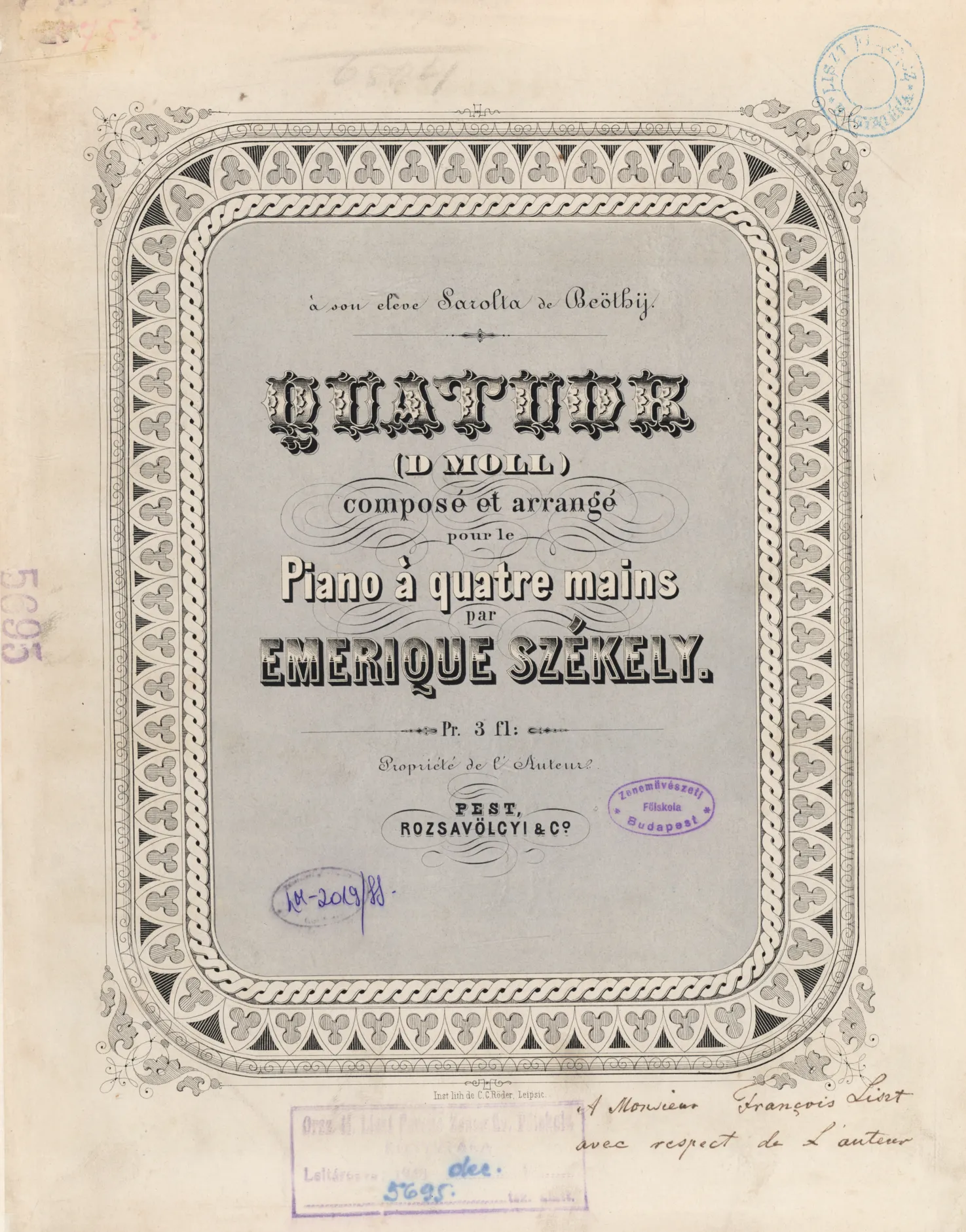
Research Library of the Liszt Ferenc Academy of Music, Z 5.695
The two public performances of the Hungarian String Quartet (No. 5) in B flat major were particularly interesting. The work was first performed during a concert featuring Székely’s works in 1874 at the Redoute (Vigadó) in Pest. The composer was joined by his brother István Székely, an amateur cellist. Moreover, two famous actors were also mentioned in the advertisement: Lehel Ódry and Lujza Blaha. In the manuscript of the string quartet, the titles and inscriptions appear in French and Italian. For the premiere, however, the titles of movements were translated into Hungarian, thus, instead of Andante, Allegro moderato, Andante, Scherzo and Finale the public could read the Hungarian equivalents, at least in the press.
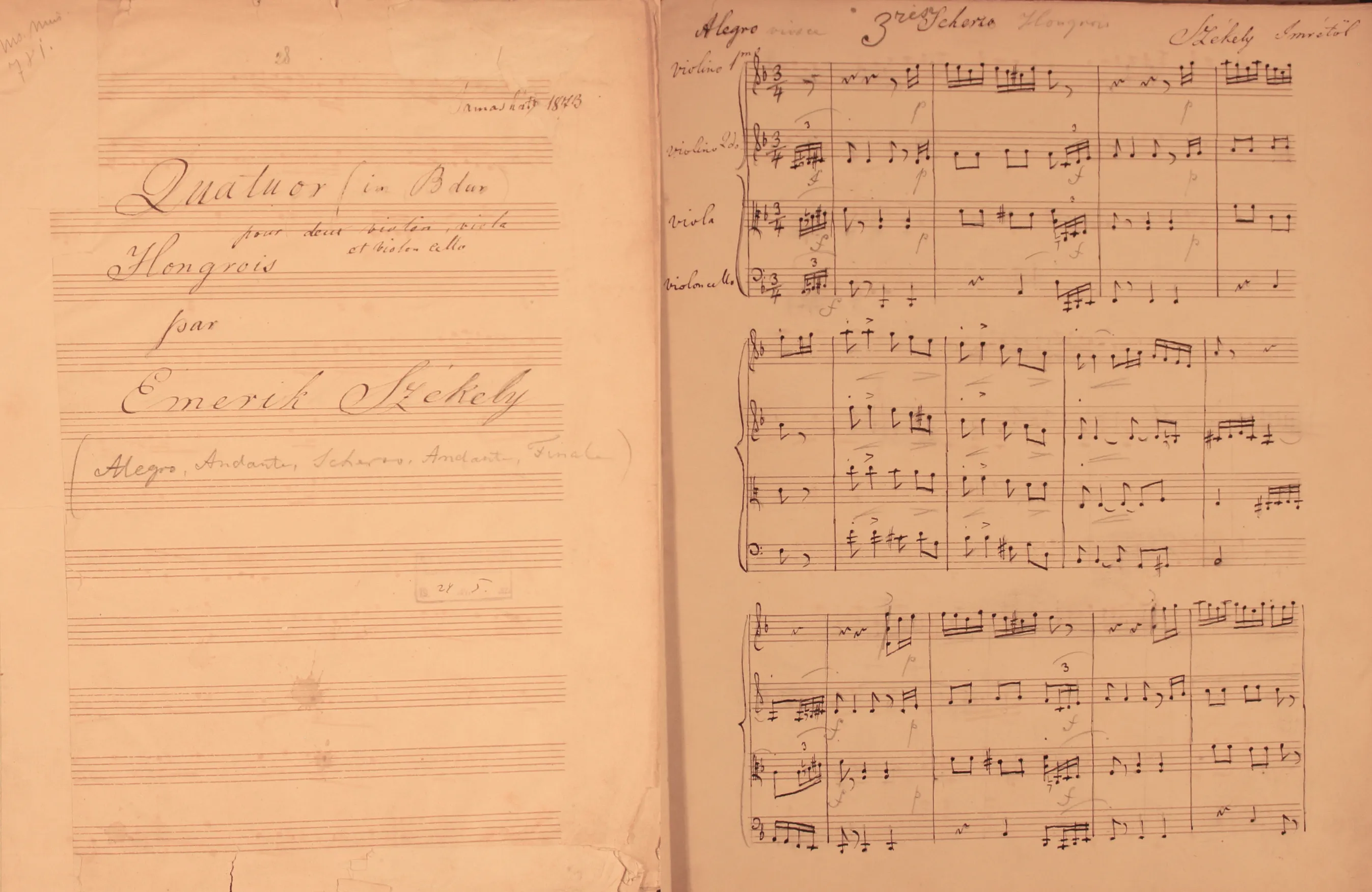
National Széchényi Library Theatre and Music Department, Ms. Mus. 781
New Esterházy Quartet (2013), Blue Coast Music
The first performance was not a success, so it is surprising to see that Székely gave the work another chance. In 1880, the major figures of the music life in Pest – including, of course, Imre Székely – decided to set up a civic association to promote Hungarian composition. After repeated meetings, formations, dissolutions, re-formations, and several name changes (the last one was Hungarian Music Lovers’ Association “Hungária”), the only tangible result was the organization of a modest concert in March 1882. According to the concert’s advertisement, only “new and original” Hungarian works were on the program, including in a somewhat contradictory manner Székely’s String Quartet in B flat major, which had been premiered eight years earlier. Once again, there was no positive critical response.
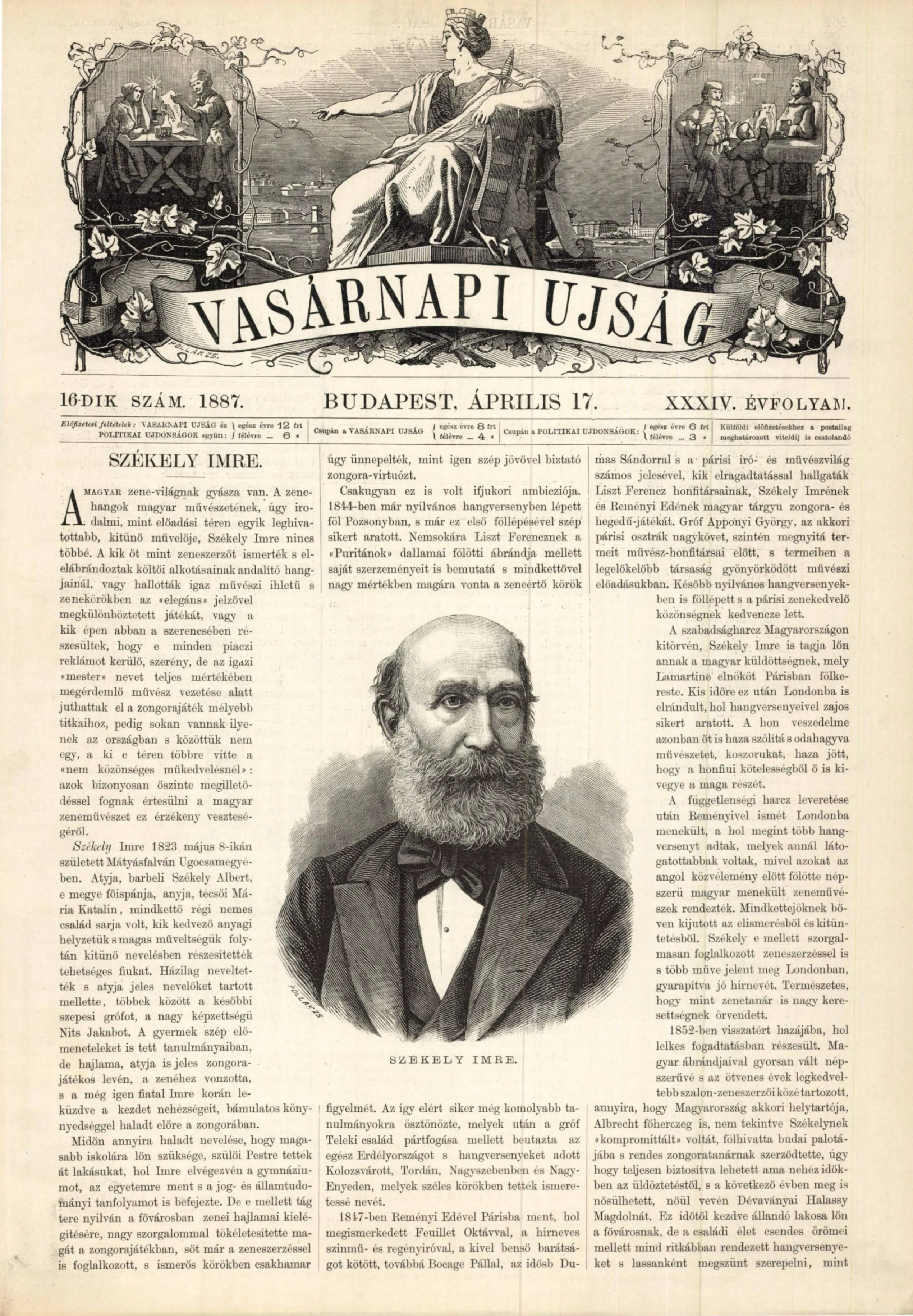
Vasárnapi Ujság, 17 April 1887.
The Composer’s Daughters
Members of an aristocratic family of intellectuals, both Ilona (1858–1896) and Irén (1864–1913) were key figures in the social and cultural life of Pest. They belonged to what historians call “the free-floating intelligentsia,” a social stratum on the situated between the nobility and the bourgeoisie. These families ran literary and musical salons and created a flourishing cultural environment through the close interweaving of art and social life. During their childhood, special attention was given to their learning languages and musical training: their father ensured that both of them reached the highest level of piano playing skills of the time.
![Ilona Székely: Kettesbe bolyongva [Wandering together], song, manuscript reproduction (1896).](/images/2-kettesbe-bolyongva.webp)
Magyar Géniusz, 26 January 1896.
In addition to playing the piano and composing music, Ilona was also an author and Irene worked as a music teacher and translator. These activities required a serious education: they were familiar with the arts, the social etiquette, and even economic affairs: they helped run the family estate along the Tisza River. This is evidenced e.g. by Irén Székely’s botanical translations, which later resulted in a book edited by Janka Wohl, Hölgyek kertészeti kézikönyve [The Ladies’ Handbook of Gardening].
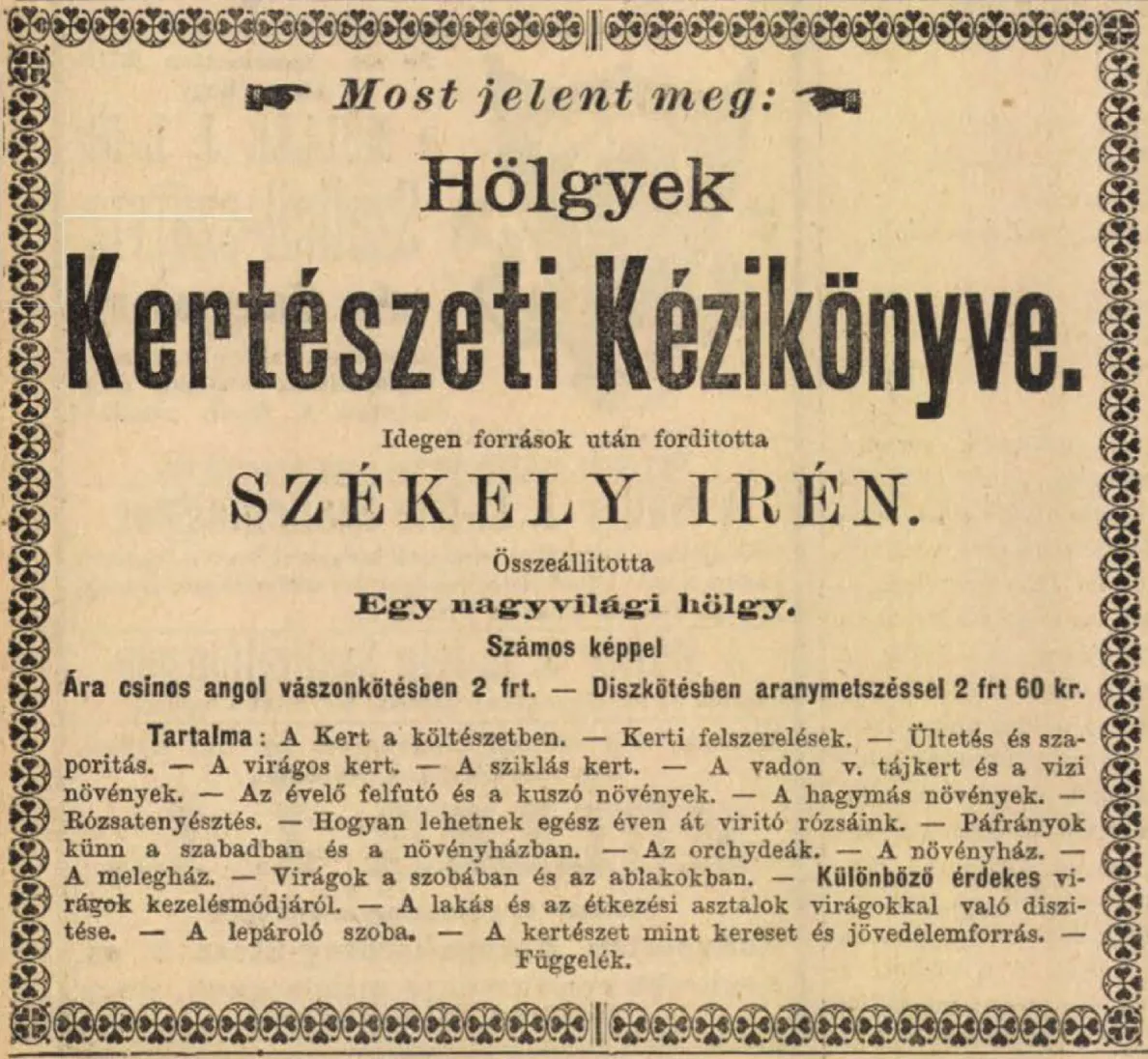
Fővárosi Lapok, 22 May 1894.
Keeping up with the conventions of the time, Ilona occasionally published her works under a male pseudonym. However, she used her family’s title of nobility as “his” last name (Viktor Barbeli). The older Székely sister’s feuilletons released on the columns of Pesti Napló, Fővárosi Lapok, and Magyar Géniusz dealt not only with music and music education, but also covered most everyday life topics of a bourgeois intellectual family. Her topics included manners and etiquette, fashion, healthy living, and religion, to name but a few. She wrote book reviews and also published a travelogue-like feuilleton about an adventurous crossing of the frozen Tisza River on a New Year’s Day.
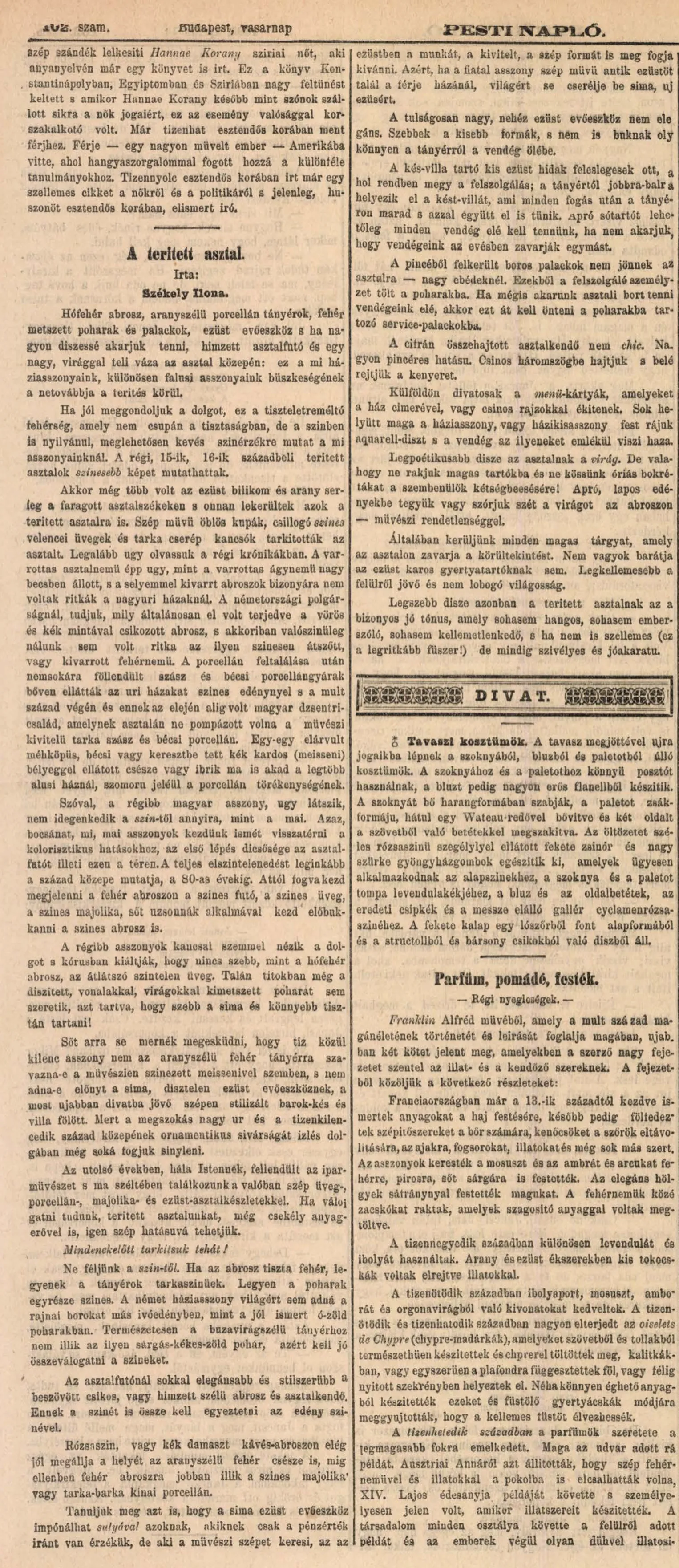
Pesti Napló, 14 April 1895.
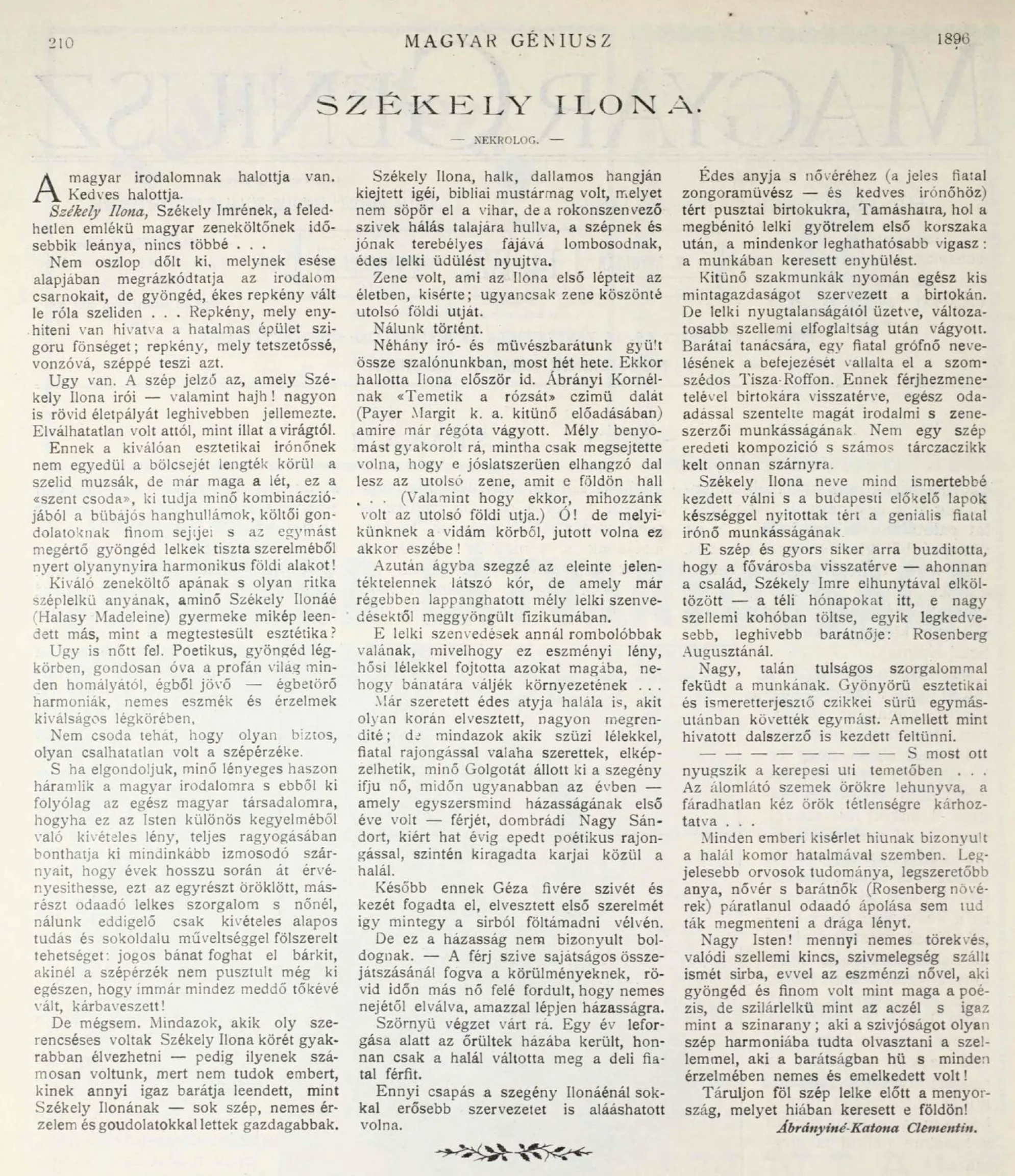
Magyar Géniusz, 29 March 1896.
The letters sent from the family estate in Tamáshát give a vivid picture of the everyday life of this educated family as well as their connections to the intellectuals in Pest.
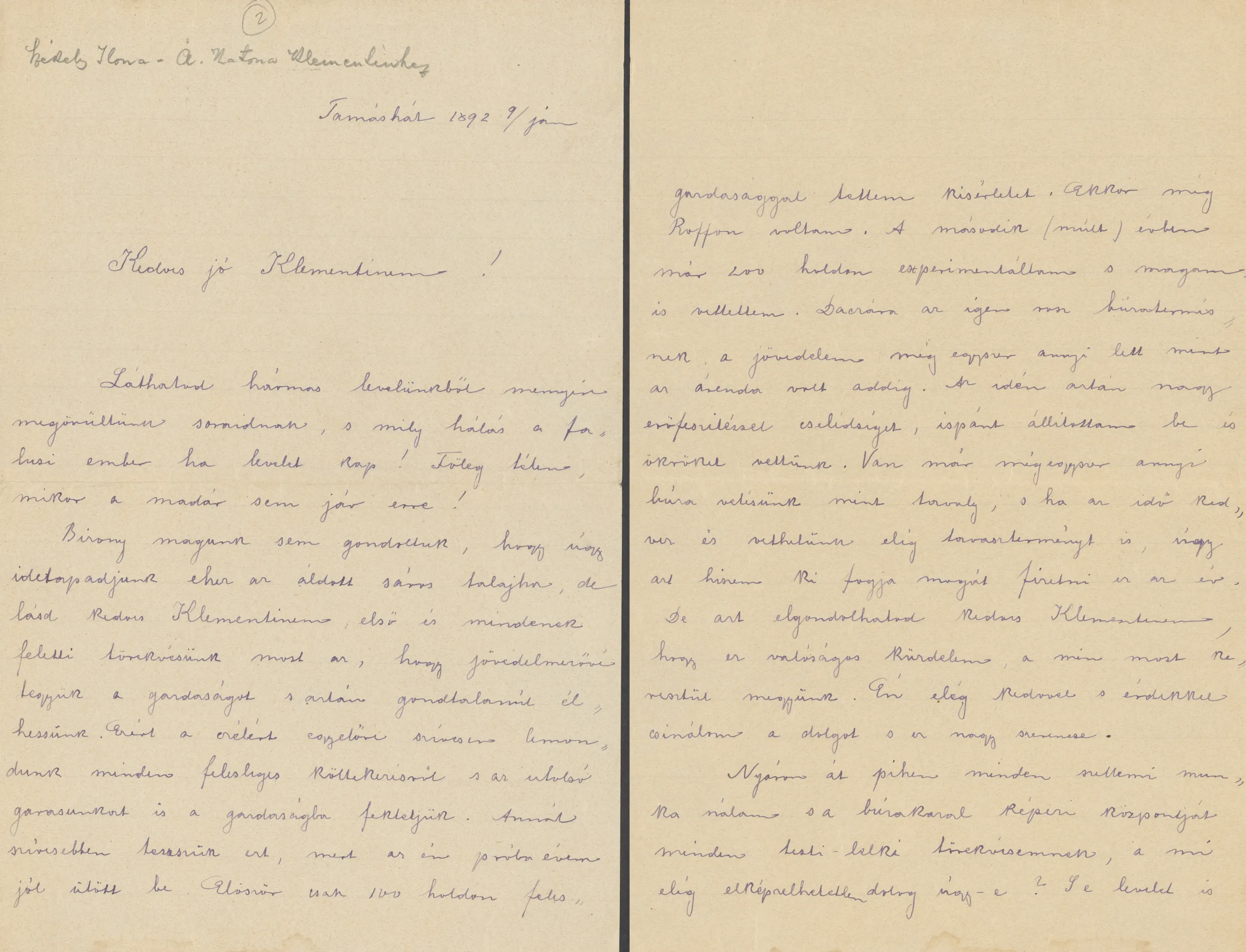
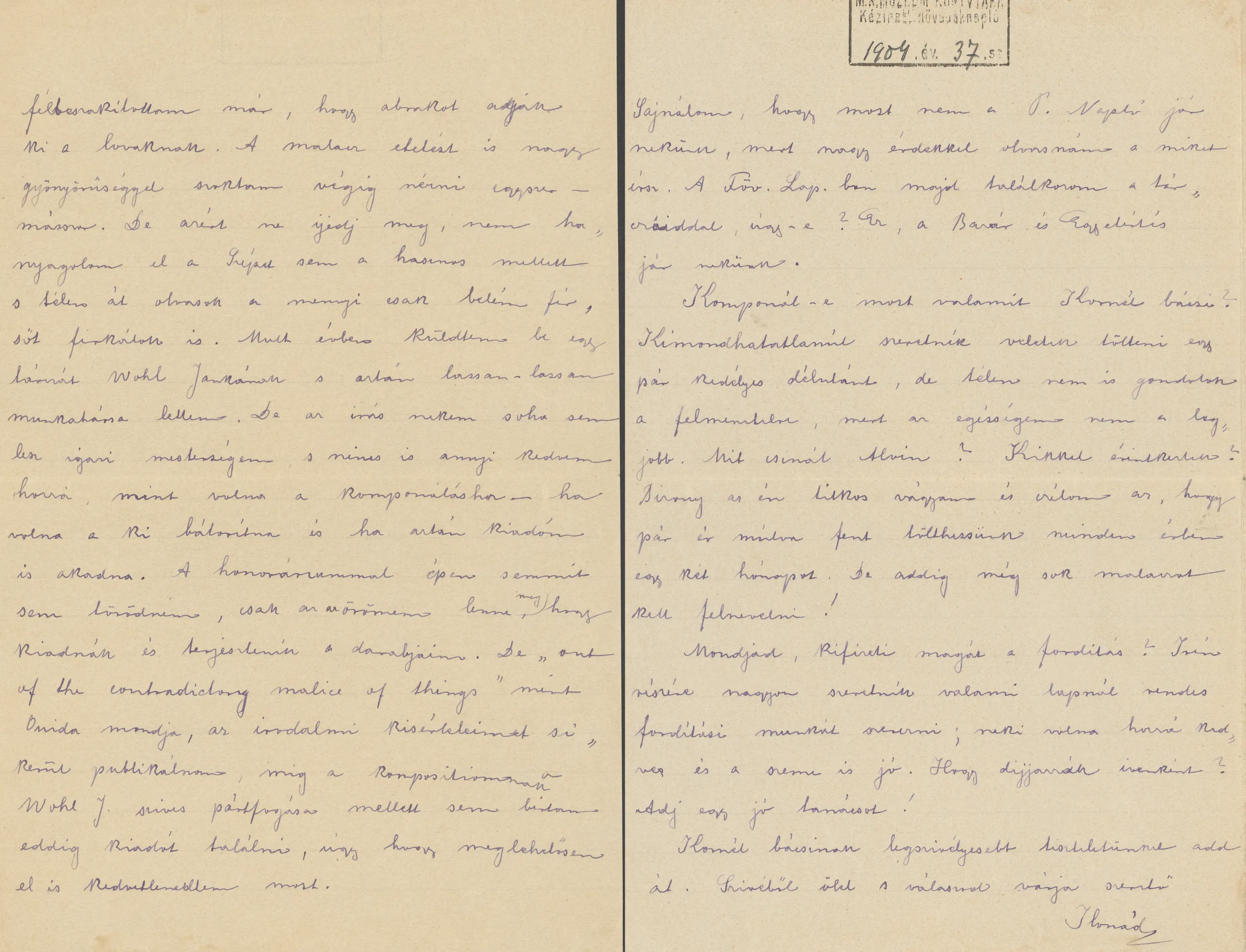
National Széchényi Library Manuscript Collection
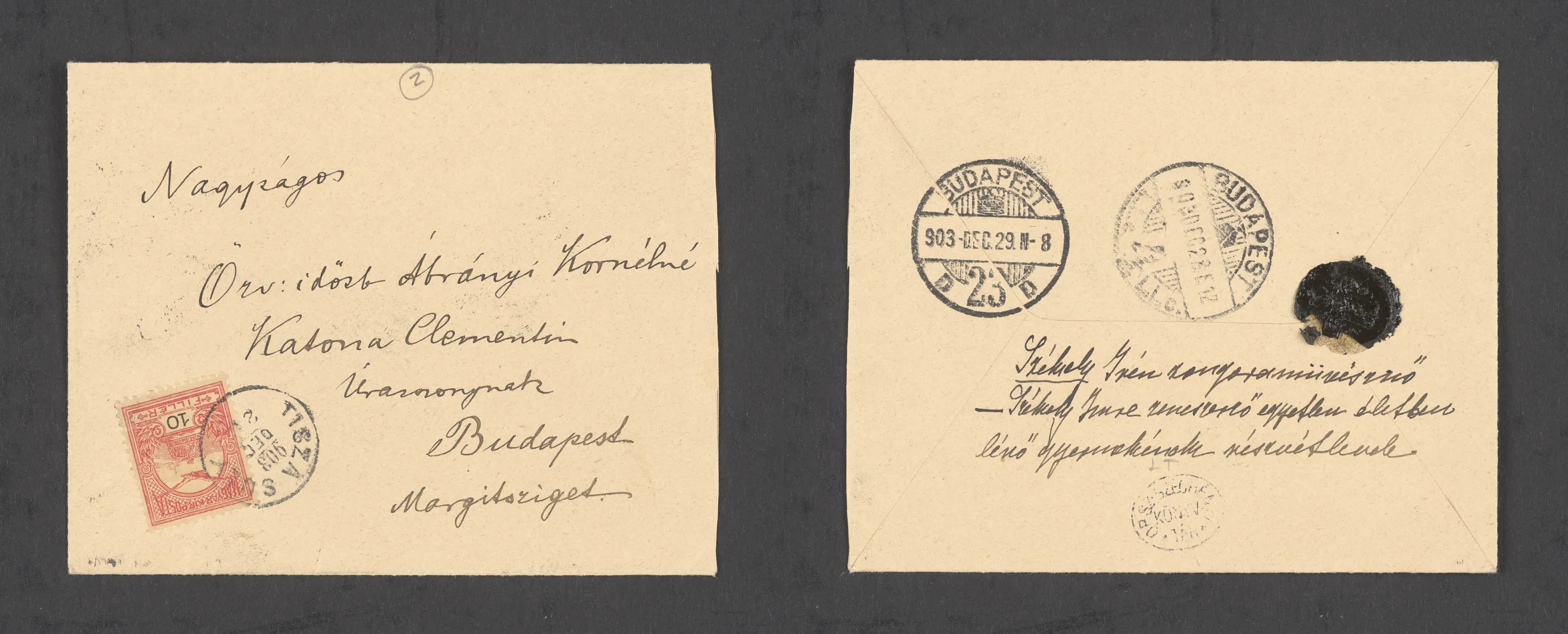
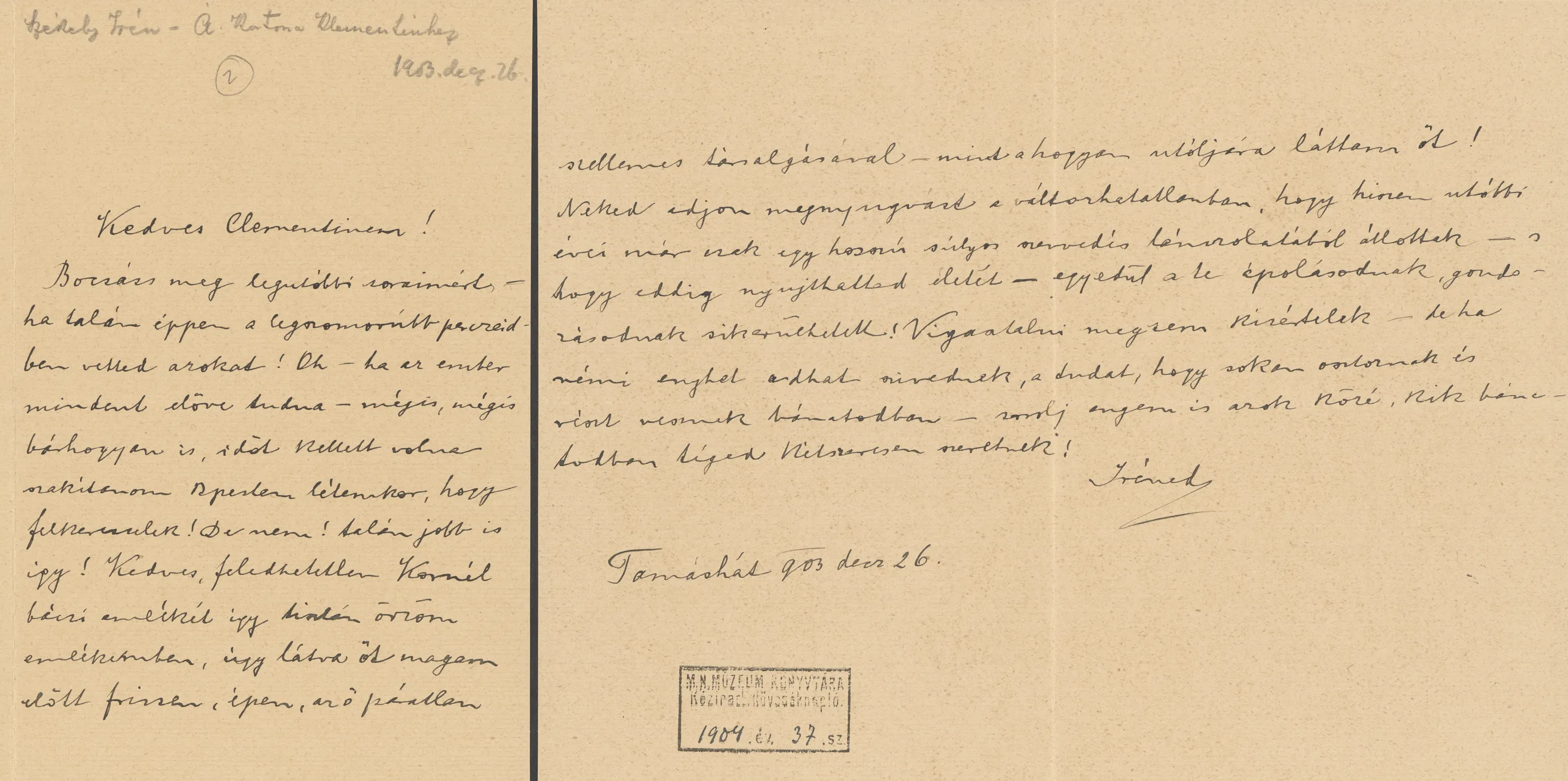
National Széchényi Library Manuscript Collection
Following Imre Székely’s death in 1887, the sisters looked after their father’s musical legacy, in addition to the estate. They prepared unpublished works for the press and gave manuscripts and photographs to the organizers of the music exhibition of the 1896 millennium celebrations. The family eventually donated the music manuscripts to the National Széchényi Library.
Curated by Zsolt Vizinger
